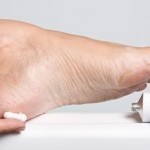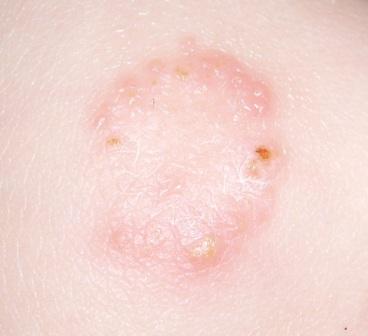Ringworm rash is used to describe a circular reddish rash that can be very itchy. What makes it different from other type of rash is the healthy looking skin that appears in the center of the circular rash. Ringworm rash is typically cause by a fungus and there is no actual worms under the skin.
Ringworm rash may appear in any part of the body. If it appears in the scalp, it is called tinea capitis. If it affects the body, it is known as tinea corporis. If it appears in the feet, it is known as athlete’s foot.
Unlike other types of rash, ringworm rash is very contagious. It can directly spread from one person to another or it can even transfer even on the hands that had scratched the affected area. Any direct contact to a used personal item like towels may also transfer the ringworm rash. Likewise, pets that have ringworm rash may also transfer the fungus to humans.
It is recommended that proper hygiene be observed to avoid spread of ringworm rash.
What are the symptoms of ringworm rash?
Some general symptoms of ringworm rash may include:
- Circular rash found in the skin
- Rash is red and may appear swollen in the edge
- There is a healthy normal looking skin between in the center of the rash
- Rings of red that may appear scaly
- The patch of ringworm may appear more than one. The patches of ringworm rash may overlap from the effected area.
Aside from general symptoms, other specific symptoms may be observed with each type of ringworm. If the ringworm rash appears on the face or neck, it is called tinea barbae. The symptoms related to tinea barbae are:
- Itching
- Swelling
- Hair fall
If the ringworm affects the scalp, it is known as tinea capitis. The symptoms of tinea capitis are:
- Scaling
- Bald spots
- Hair loss
If the ringworm is seen on the skin, it is called tinea corporis. The symptom of tinea corporis are:
- Circular rash
- Itchy
What are the causes of ringworm rash?
Ringworm rash is generally caused by fungus in the body. The fungi live on the cells that are found in the outer layer of the skin.
Ringworm rash can easily spread. Some ways of spreading it to others may include:
- Human transfer is one way to spread the ringworm rash. Direct contact of the skin from infected person to another is one way of getting the ringworm rash.
- Ringworm from animals is another way of getting ringworm. A human may get ringworm rash through petting an infected animal like cats or dogs. Other animals like horse, pigs and rabbits may also be a carrier of ringworm.
- Objects used by individuals with ringworm rash may also cause the spread. Personal objects like towels, beddings, combs and clothes used by infected person may spread it to another if used by another person without ringworm.
What is the risk factors affecting ringworm rash?
Individuals who live in a humid climate is susceptible to develop ringworm rash
- People living in a very crowded place may also have ringworm rash especially if the place is not well ventilated.
- Person who do not practice proper hygiene
- Individuals who share personal things to other people like towels and clothes
- Those who perspire profusely
- Actively participate in sports with direct contact like football and wrestling
- Who wears very tight clothes
- Those individuals who have poor immune system
What are the Treatments of Ringworm Rash?
If you see symptoms of rash, it is important that you see your doctor immediately. Your health care provider will be the one to decide if what you have is ringworm rash or other types of skin disorder. In order to get diagnosis, a skin sample may be needed for proper evaluation.
If the result shows that your rash is caused by fungus, necessary treatments and lifestyle change may be recommended to treat your condition. Some of the treatments for ringworm rash are:
1. Topical ointment
 Topical ointment is given if the ringworm rash affects the body or in the groin area. Normal use of antifungal creams is recommended for at least two weeks to see positive results. If the rash does not improve by at least two weeks, you have to visit your physician again for other type of medication.
Topical ointment is given if the ringworm rash affects the body or in the groin area. Normal use of antifungal creams is recommended for at least two weeks to see positive results. If the rash does not improve by at least two weeks, you have to visit your physician again for other type of medication.
2. Oral medication
 Oral medication is given to patients who have ringworm rash in hard to reach areas. Like fungus that are under the nails or in the hair.
Oral medication is given to patients who have ringworm rash in hard to reach areas. Like fungus that are under the nails or in the hair.
3. Avoid sharing of personal objects
 Avoid sharing of personal objects like towels, combs and clothes to avoid getting or spreading the ringworm rash.
Avoid sharing of personal objects like towels, combs and clothes to avoid getting or spreading the ringworm rash.
4. Do not touch infected animals
 Avoid touching an infected animal to avoid getting the ringworm rash. It is recommended that you bring your pets to veterinarian to make sure that they are healthy and disease free.
Avoid touching an infected animal to avoid getting the ringworm rash. It is recommended that you bring your pets to veterinarian to make sure that they are healthy and disease free.
5. Wash your hands
 Washing your hands and keeping proper hygiene is very essential to make sure that you do not get ringworm rash. Wash your hands before and after holding objects in the public places like gyms, lockers and other public places.
Washing your hands and keeping proper hygiene is very essential to make sure that you do not get ringworm rash. Wash your hands before and after holding objects in the public places like gyms, lockers and other public places.
Ringworm rash is contagious but it can be treated. Visit your physician to avoid spreading the fungal infection to your family.
